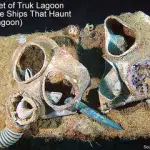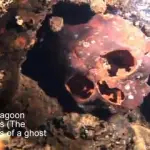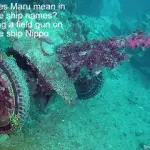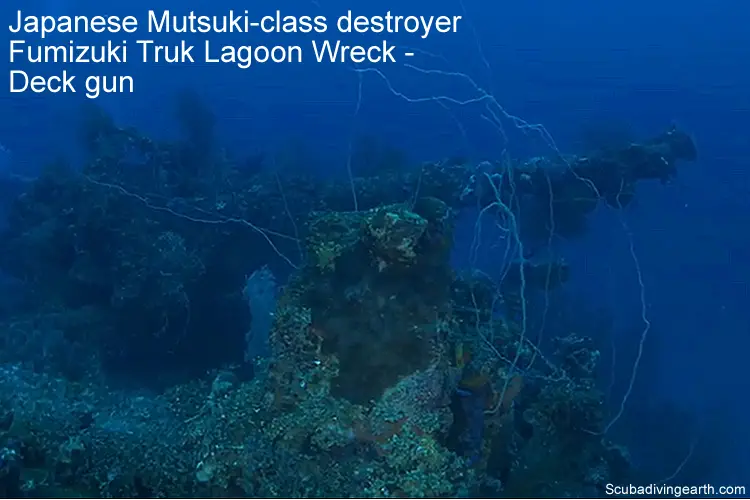
One of three purpose built military wrecks in Truk Lagoon Fumizuki Destroyer
Imperial Japanese Navy Fumizuki Destroyer is one of only two destroyers in Truk Lagoon and one of only three purpose built military ships. The other destroyer is the Oite Destroyer. The third military Truk Lagoon wreck is the I-169 Submarine.
Scuba dive The Fumizuki Destroyer Truk Lagoon Wreck: Fumizuki Destroyer is one of twelve Japanese Mutsuki-class Destroyers. A Truck Lagoon wreck at a maximum depth of 40 metres (131 feet) and one of three purpose-built military ship wrecks in the lagoon. A dive that’s within the range for recreational scuba divers looking to dive Truk Lagoon wrecks.
The best way to dive Truk Lagoon is by a scuba diving liveaboard. You can check the latest and best deals on Truk Lagoon liveaboards using the following window:
Truk Lagoon is the name these Pacific lagoons and islands were known as in 1944 when they were in Japanese occupation. However, the name of Truk Lagoon was changed in 1990 to Chuuk Lagoon.
Scuba divers seem to use these two names synonymously, but the correct name is Chuuk Lagoon. These famous wrecks are now dived by scuba divers across the world.
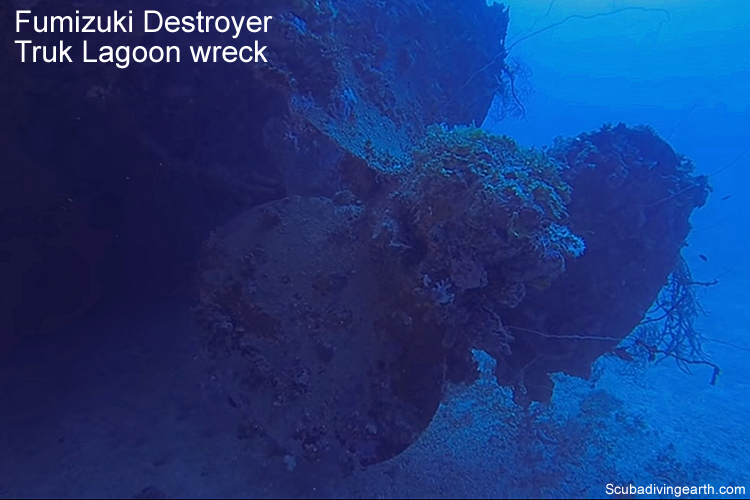
Details of IJN Fumizuki Truk Lagoon wreck
- The Fumizuki Destroyer was a Mutsuki Class Destroyer.
- She was an improved version of the Kamikaze-class destroyer.
- These were the first destroyers with triple 61 centimetre (24 inches) torpedo tubes.
- She sits upright on the sea bed, but is listing to port.
- There is extensive marine growth on her hull with many schools of fish to see.
- This wreck 30-40 metres (100-130 feet) deep.
- Which means the Fumizuki Destroyer wreck is within the recreational diving depth limit of 40 metres (131 feet).
- The Fumizuki Destroyer was built in 1926.
- She was 97 metres (320 feet) in length, with a gross tonnage of 1,913.
- The Fumizuki Destroyer wreck lies west of Moen Island in Truk Lagoon. Her location can be seen on the Truk Lagoon wreck map.
- There are guns on the deck, which are covered in corals.
- There’s one gun on the bow and one on the stern of this wreck.
However, the majority of this dive is at a depth in excess of 30 metres (100 feet). Which means your no stop decompression time on this dive will be short. Unless you use nitrox, which at this sort of depth the maximum percentage of nitrox is 28% (i.e to 40 metres (131 feet).
But even with using nitrox to your advantage, your bottom time with 28% nitrox is still only 15 minutes vs 10-12 minutes on atmospheric air. This depends on whether you dive using the PADI or BSAC tables.
Truk Lagoon dive liveaboards table
This list of Truk Lagoon liveaboards is in descending customer rating order, followed by Scuba Diving Luxury Rating (SDE Lux Rating, see below), so the liveaboards with the highest customer rating and the best SDE lux rating will be at the top of the list. If you want to change the list order, use the “Sort by” dropdown below.
| Discover Liveaboard | Customer Rating | SDE Lux Rating % | Flexible Booking | Dive Courses | Dietary Requirements | Nitrox | Gear Rental | |
|---|---|---|---|---|---|---|---|---|
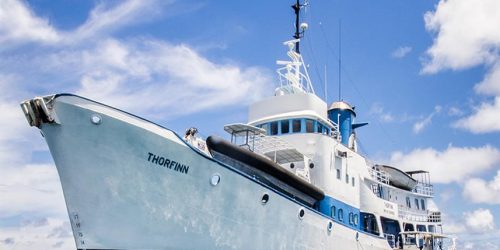 |
Review: SS Thorfinn; Book: SS Thorfinn | 8.8 | 88% | YES | YES | YES | YES | YES |
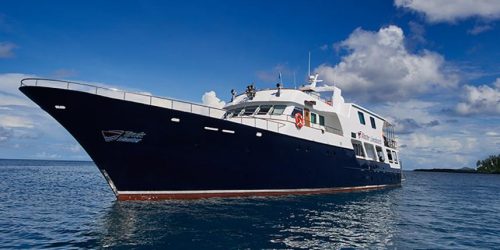 |
Review: MV Truk Master; Book: MV Truk Master | 7.9 | 65% | YES | NO | YES | YES | YES |
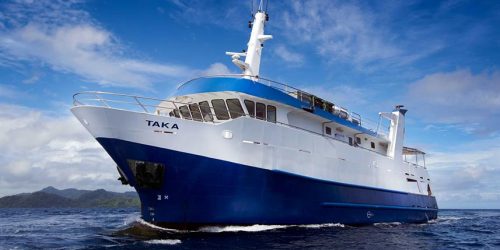 |
Review: MV Pacific Master; Book: MV Pacific Master | 0 | 56% | YES | YES | YES | YES | YES |
The Scuba Diving Earth Luxury Rating (SDE Lux Rating) is explained on each liveaboard review when you click the “Discover Liveaboard” link, and is my own Liveaboard Luxury Rating I’ve assigned to all liveaboards. Choosing between liveaboards is helped by customer scores, and if you get stuck choosing between two or three liveaboards, where each one has a high customer score out of 10, you can use the SDE Luxury Rating to help narrow down your choice.
Think about it like using Booking.com when searching for the best hotel. Booking.com also use a customer score where each customer rates hotels out of 10. This is similar to the liveaboard customer rating, which is also rated out of 10. But let’s say you only like to stay in hotels rated 8 and above on Booking.com, but you also want the hotel to have WIFI or parking, or to have a swimming pool etc. The features each hotel has is usually secondary to the score out of 10.
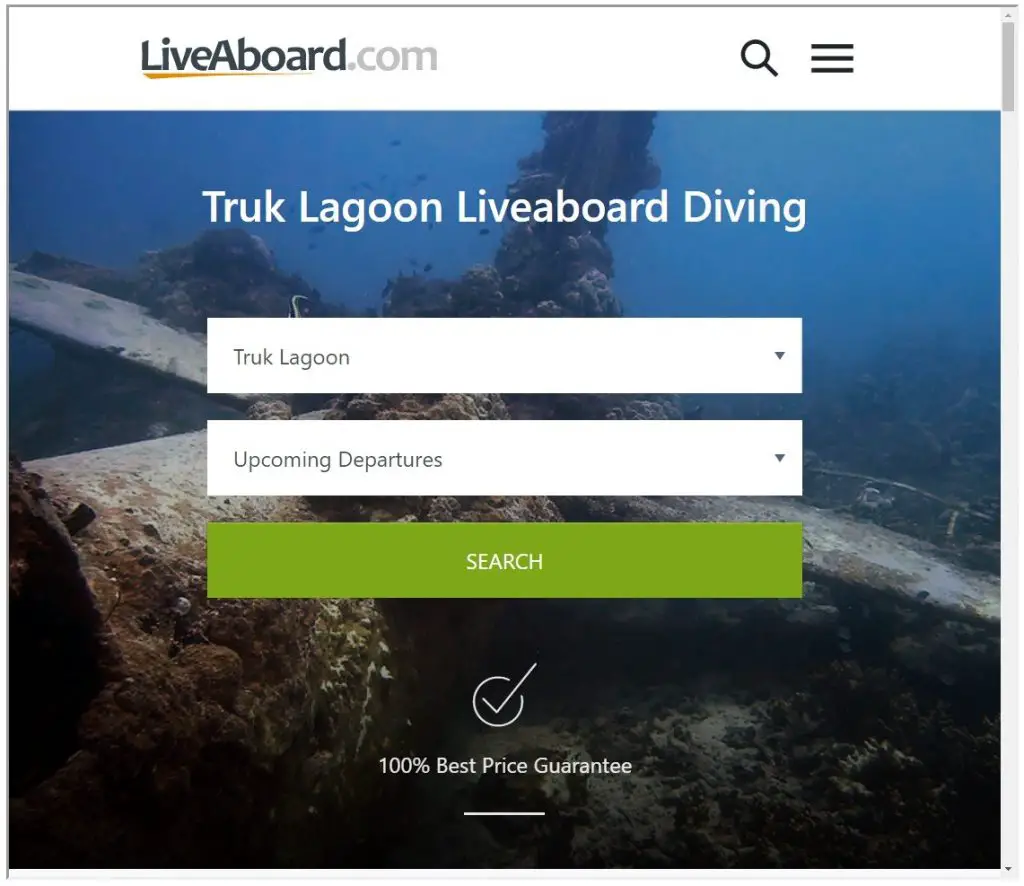
Fumizuki destroyer Truk Lagoon wreck video
This is a video of Fumizuki Destroyer of Truk Lagoon:
Underwater video of the wreck of the destroyer Fumitsuki, one of the many Japanese shipwrecks at Truk Lagoon.
I hope you enjoyed this article about Fumizuki destroyer Truk Lagoon
I’d love to hear from you. Tell us about your adventures of diving and snorkeling, in the comments below. Please also share your photos. Either from your underwater cameras or videos from your waterproof Gopro’s!
If this article hasn’t answered all of your questions. If you have more questions either about snorkeling or scuba diving (or specifically about Fumizuki destroyer Truk Lagoon), please comment below with your questions.
There will also be many more articles about scuba diving (and snorkeling) for you to read and learn about these fabulous sports.
Have fun and be safe!


